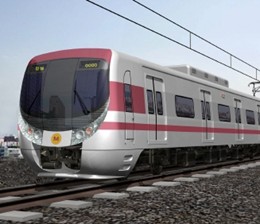 As promised yesterday, Microkhan’s gonna continue with its week-long series of “extras” taken from the cutting-room floor of my Wired smart-grid essay. Today’s treat? How subways can become part of distributed-generation networks, along with rooftop solar panels and backyard wind turbines.
As promised yesterday, Microkhan’s gonna continue with its week-long series of “extras” taken from the cutting-room floor of my Wired smart-grid essay. Today’s treat? How subways can become part of distributed-generation networks, along with rooftop solar panels and backyard wind turbines.
Beginning in the early 1970s, the Metropolitan Transit Authority began experimenting with flywheels that can capture the energy produced by subway braking. (About 60 percent of the heat in the subway tunnels stems from screeching brakes.) The idea is for that energy to then be pumped back into the system, so that the subways can reduce their grid dependence.
The New York flywheel experiments continue, evidently to little effect. Meanwhile, however, cities like Seoul and Beijing seem to be making progress. The Korean experiment, which relies on ultracapacitors, seems especially promising, since the the limits of battery technology have been an impediment to regenerative braking. (Though my colleague Vince Beiser contends that supersized batteries are no longer a pipe dream.
Once the capture and storage details get ironed out, the next question is whether some of that energy can be funneled into the grid, rather than kept locked inside the transit system. In other words, would there be an economic advantage to selling that power to utilities? Could the resulting markup be used in part to fund transportation projects—or, at the very least, keep our fare from constantly spiraling upward? At least one learned scholar I talked to favors the distributed approach, though perhaps not in New York—our century-old system, alas, may be too complex a beast to take part in the coming alt-energy revolution.


Like gas stations in rural Texas after 10 pm, comments are closed.